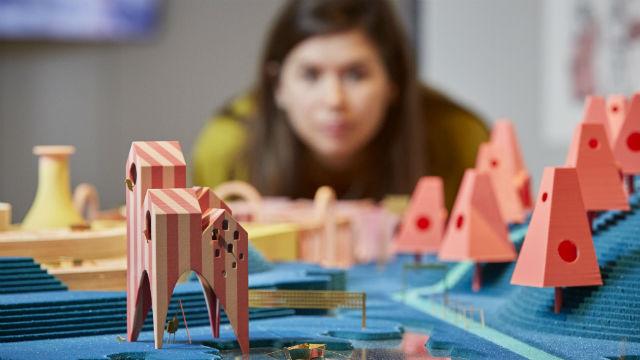The Wellcome Collection's blockbuster offering for thus autumn's exhibition season takes another look at the asylum. Riding on a tide of interest in mental health issues, and the perennially popular Victorians, Bedlam has proved, yet again, that the Wellcome's brand is thriving. From it's own custom twitter bot, to lectures, blogs and even a photo-booth (#spiritbooth)- Bedlam is accompanied by all the best public engagement that a museum can offer. But, is it a good exhibition? The Ministry is very conflicted...
Guys, it has taken us a long time to sit down to write this review. Bedlam has so many strong points about it that it feels unfair to say we didn't like it. However, it definitely has some iffy parts about it as well so its difficult to say that wholesale it was great.
Let's just take for example the Madlove Asylum. The Madlove Asylum is an installation at the end of the exhibition which is clearly intended to be the piece de resistance. It's even screened off from the main gallery space just so that you don't get lured in by exciting drawings and the scale model and miss the rest of the exhibition. Madlove is a separate (Wellcome funded) organisation composed of artists who have worked with a number of mental health stakeholders, including certified patients, to create a new vision for what the asylum could be. Is it possible to go mad in a safe way? If you designed your asylum what would it be like? Visitors are asked.
The installation is dominated by a brilliant blue landscape model doted with cheerful angular pink structures and golden furniture. The Madlove asylum is like a site-specific piece of art but inspired by people in inpatient hospital care for psychiatric issues. A running track, an artist workshop, a library and even a market garden make this designer asylum sound an idyllic place for anyone dealing with any kind of mental health issue. Visitors are even invited to take a way a small 'pocket asylum' where they can write themselves reminders for when things get tough.
The Madlove Asylum is so good in fact, it kind of feels like the Wellcome wanted to have an exhibition about it and everything else was built backwards. The inclusion of patient art from Bethlem Hospital in the nineteenth and twenteith centuries is interesting, but doesn't really seem to have the same kind of narrative purpose. Is it an exhibition about asylum history, or asylum art? Asylums in art? The first room about Bethlem hospital in the eighteenth century seems a bit like that boring introductory bit your teachers make you write. (Why are there so many pictures of a hospital in Belgium - isn't this meant to be about English asylums? Or is about the development of the asylum system generally?)
I think the real concern about Bedlam is that it is a very 'Wellcome' exhibition. The brand has become so confident in fact that their exhibitions are becoming well, a bit predictable. A catchy artistic intervention to start, a room of historic contextualization, a room which blends objects and art in an unexpected way, and then some artistic interventions to finish it all off. Even the small bits of the exhibition which were trying to provide some historic narrative about the development of asylum treatment in the UK fade a bit into the background, overshadowed by the need to make everything COOL ART ALL THE TIME.






